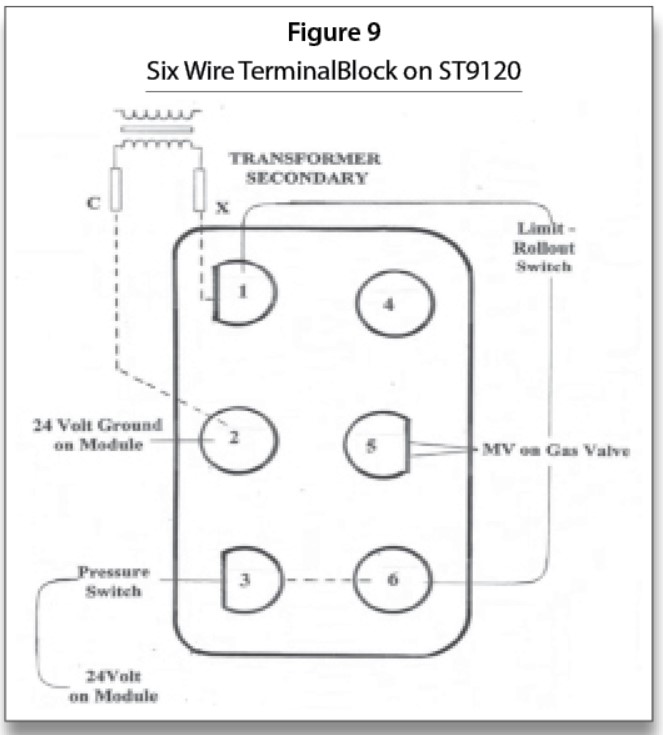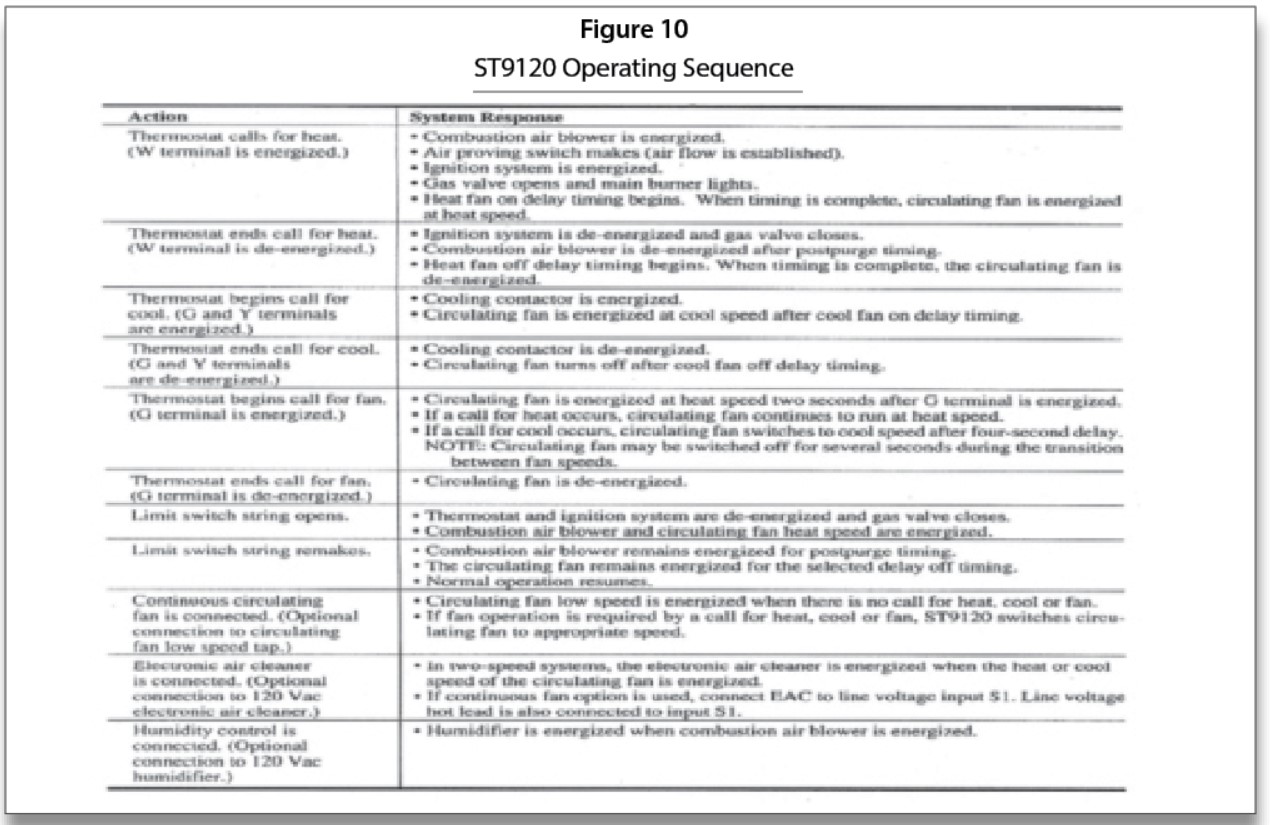Written on: March 11, 2024 by Timmie McElwain
Part 1, from the Nov/Dec 2023 Indoor Comfort
Part 2, from the Jan/Feb 2024 Indoor Comfort
We continue our discussion of modern heating systems and the advanced electronic controls associated with furnaces and boilers. It is always important to understand the basic fundamentals associated with these systems.
The majority of our equipment today uses electronic controls as well as the principal of electronic flame detection and flame rectification as a safety and flame-proving system. This is the case with both Forced Warm Air Systems and Forced Hot Water Systems.
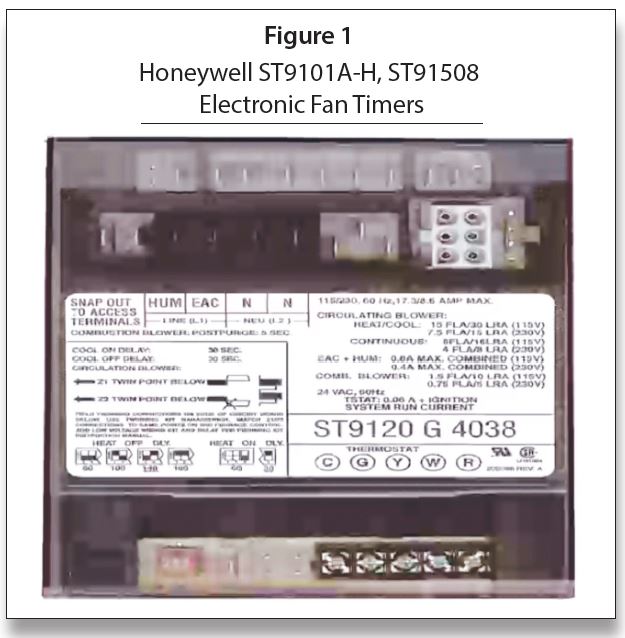
There are, however, different ways it is applied—from intermittent pilot application to direct spark ignition and including hot surface ignition. Each of these systems has its own distinct advantages and problems. Next in this series of resolving burner issues related to these systems, we offer corrections and diagnostics. It can be easy to jump to conclusions and change parts until you hopefully solve the problem. That is, however, time consuming and costly.
In this series, Advanced Controls for Gas Heating, we will continue to break down and examine individual controls, working toward Universal Replacement Controls—one control that replaces many others, making servicing these systems much easier—as well as simplifying truck stock.
I invite you to visit our Facebook page, Timmie’s Tips on Gas, I look forward to seeing you there.
Electronic Furnace & Boiler Controls
The Honeywell ST9120A-H/ST9150B Electronic Fan Timers integrate control of all combustion blower and circulating fan operations in a gas warm air system. This control is the central wiring point for most of the electrical components in the furnace. The basic purposes of the ST9120/ST9150 are to monitor the thermostat for heat, cool and fan demands; run the induced draft blower motor; and run a circulating fan (up to two speeds), as required. The electronic fan timers also monitor limit switch strings and energize separate ignition control systems through Single Pole Single Throw (SPST) pressure switches. The electronic fan timers feature either a fixed or a field-adjustable heat fan-on delay, a fixed or field-adjustable heat fan-off delay and a fixed or field adjustable cool fan-on delay, depending on the model.
Cooling fan on/off delay, extended combustion air blower postpurge, and an enclosure are available on selected models as noted in Figure 2. Electronic air cleaner (EAC) and humidifier (HUM) convenience terminal connections can be provided as an option. Continuous low speed indoor air circulation is also available as an option.
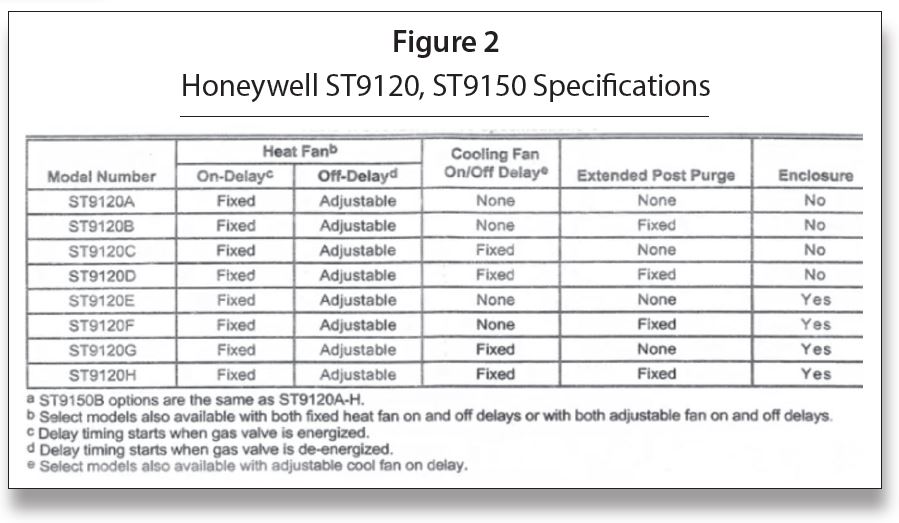
Figure 3 shows the various functions of this Electronic Fan Timer, which was the next step after the ST9101 series of EFTs with more control functions.
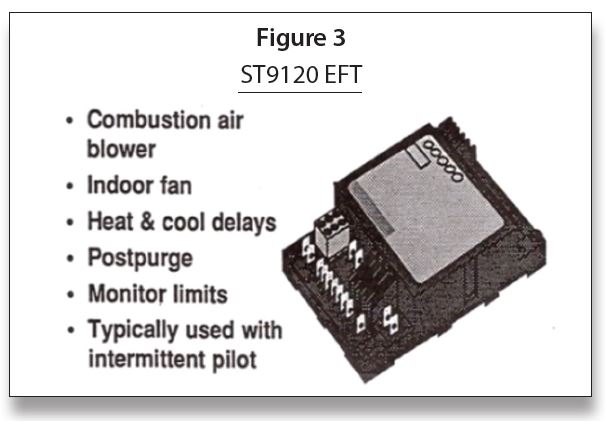
Combustion air blower
System (indoor) fan
The electronic air cleaner and humidifier terminals require the knockouts to be broken away in order to connect. This is illustrated in Figure 4.
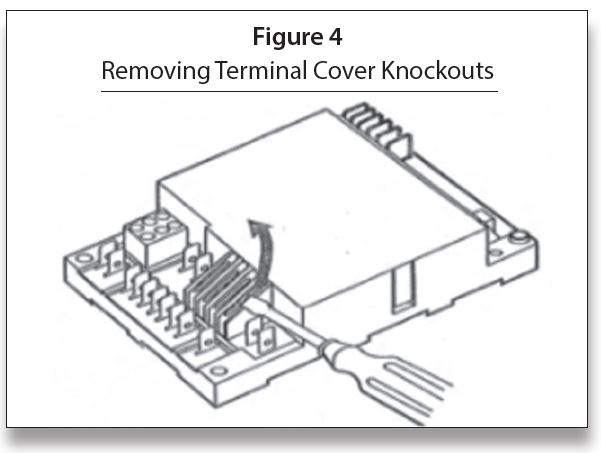
Function depends on the number of dip switches on the different versions of the ST9120. The units with only two dip switches (Figure 5) allow for heat fan-off delay only (times 60, 90, 120 and 150). The fan on time would be fixed at either 30 or 60 seconds. The units with three dip switches (Figure 6) allow heat on delay using Switch #3 set to 30 or 60 seconds, Switches #1 and #2 (times 60, 100, 140 and 180). The four dip switch units (Figure 7) allow Switch #1 to be set for four or 30 seconds cool on delay, Switch #4 heat on delay of 30 or 60 seconds and Switches #2 and #3 allow heat off delay of (times 60, 100, 140 and 180).
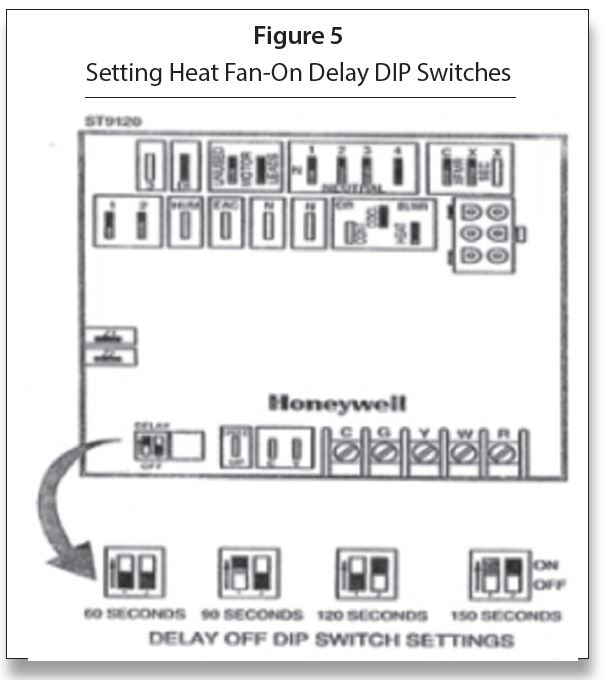
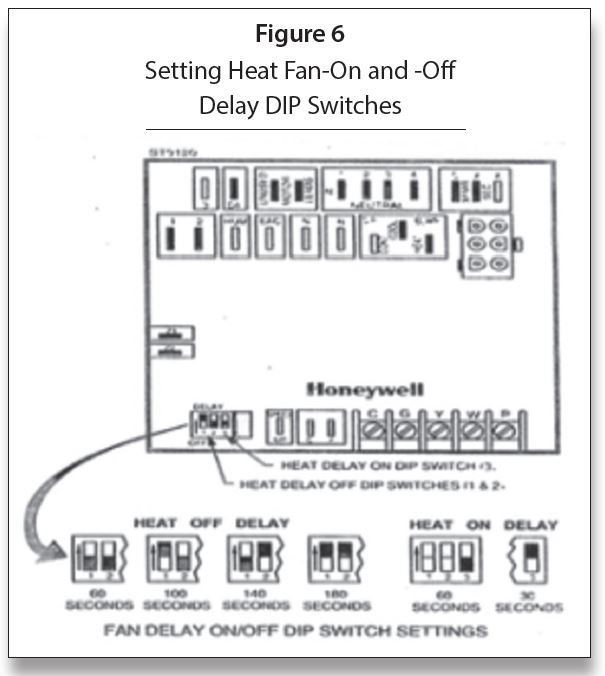
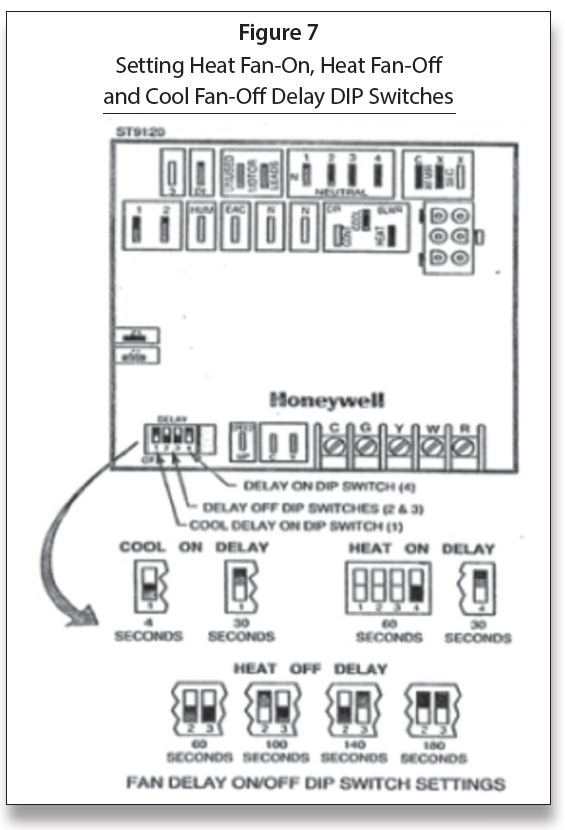
For a complete system diagram see Figure 8.
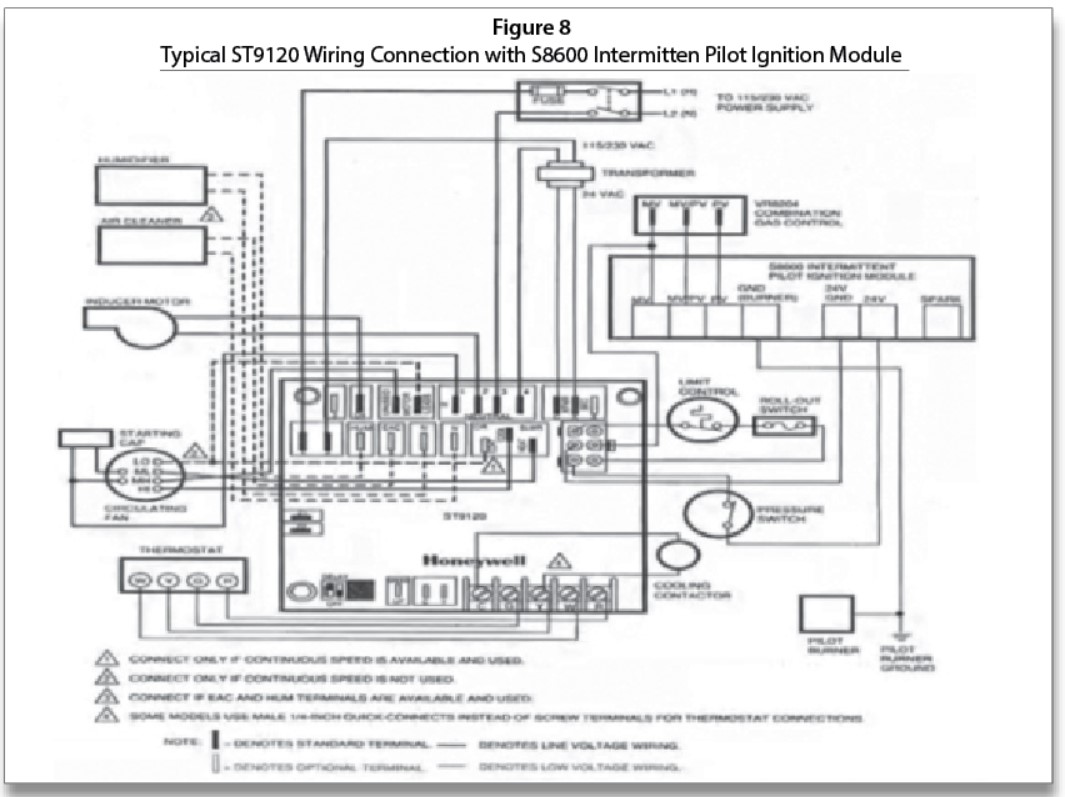
S8600 Module
Figure 9 shows the CN1 6 pin connector terminal numbers and what they are attached to. ICM
